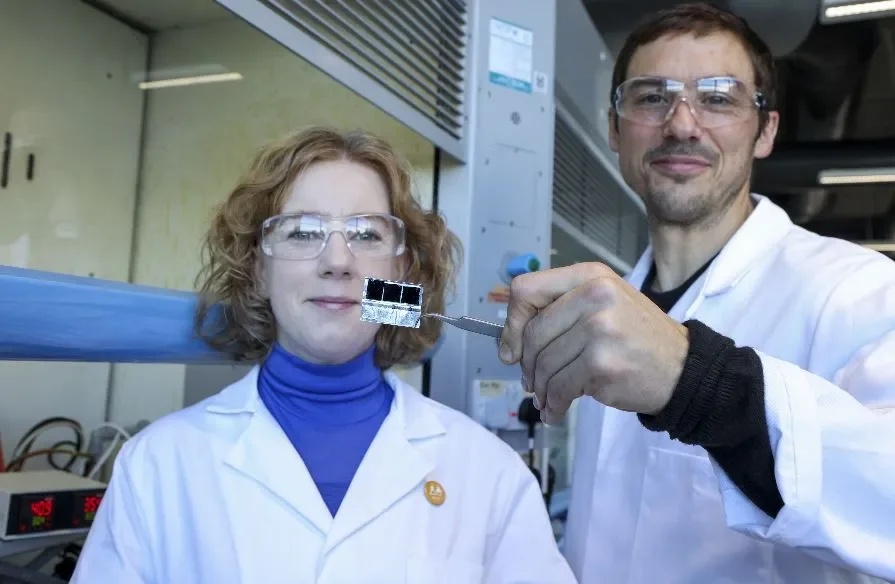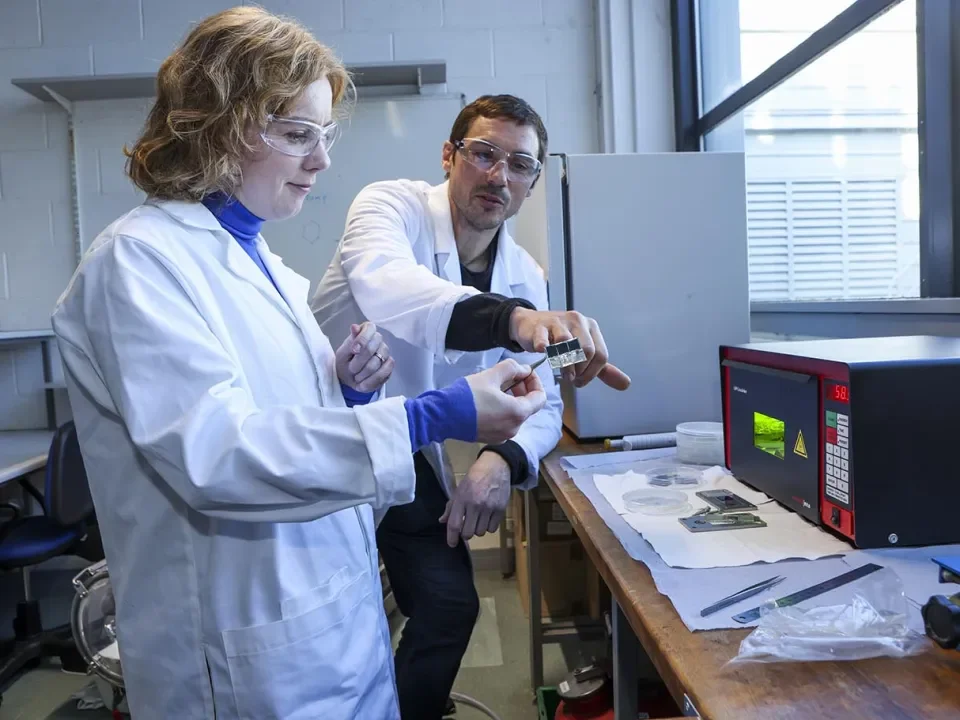

Samples made in DCU lab aboard new lunar rover set to launch for the moon
First Irish samples on the moon since the 1970s
These samples were produced in the DCU School of Chemical Sciences and prepared by Dr Kelleher, and three members of her team - Dr Graham Reid, Dr James McCormack, and Dr Jessica McFadden. They are affixed to the wheel of the Rashid Lunar Rover, designed and constructed by engineers and scientists at the Mohammed bin Rashid Space Centre (MBRSC) in the United Arab Emirates. The Rashid Rover will be brought to the moon aboard the HAKUTO-R Mission 1 lunar lander, produced by Japanese space exploration company iSpace as part of their first mission to the moon.
The project is part of a collaboration between Dr Kelleher, who works on producing nano- and micro patterned/structured surfaces at DCU, and Dr Aidan Cowley in the European Astronaut Centre in the European Space Agency (ESA), who have partnered with the MBRSC to develop samples of interest.
The aim of the mission is to study the adhesion of regolith (moon dust) onto different surfaces using a high resolution camera to gain an understanding on how it can be reduced. Moon dust is very sharp, dry and fine, and difficult to reproduce on Earth.
It can interfere with electronics and how gaskets and seals work, and can be abrasive. On the airless moon, solar wind constantly blasts the surface, imparting an electrostatic charge to the fine-grained dust. This charge causes the dust to stick to everything — from astronauts' boots to gloves, suits, cords, tools, and more.
Dr Susan Kelleher said:
“We are proud that the surfaces we developed here in the lab at DCU will be the first Irish samples on the moon since the 1970s. This project will help us to understand how we can solve the sticky problem of moon dust for future human or robot explorers on the moon - and working with these types of materials teaches us even more about developing new surfaces that can kill bacteria, which will have applications here on Earth, for example, in healthcare settings and in the International Space Station too.”
Eight sample surfaces, a combination of polymer and metal samples with micro- and nano-scale patterns on their surface as well as unpatterned control samples, were prepared for the lunar rover in the labs at DCU last year with the help of funding from both Science Foundation Ireland and the Irish Research Council. After testing to ensure they can withstand harsh launch conditions, the samples are now set to launch to the moon aboard a SpaceX Falcon 9 rocket scheduled for launch this month from Cape Canaveral Space Force Station, Florida.

